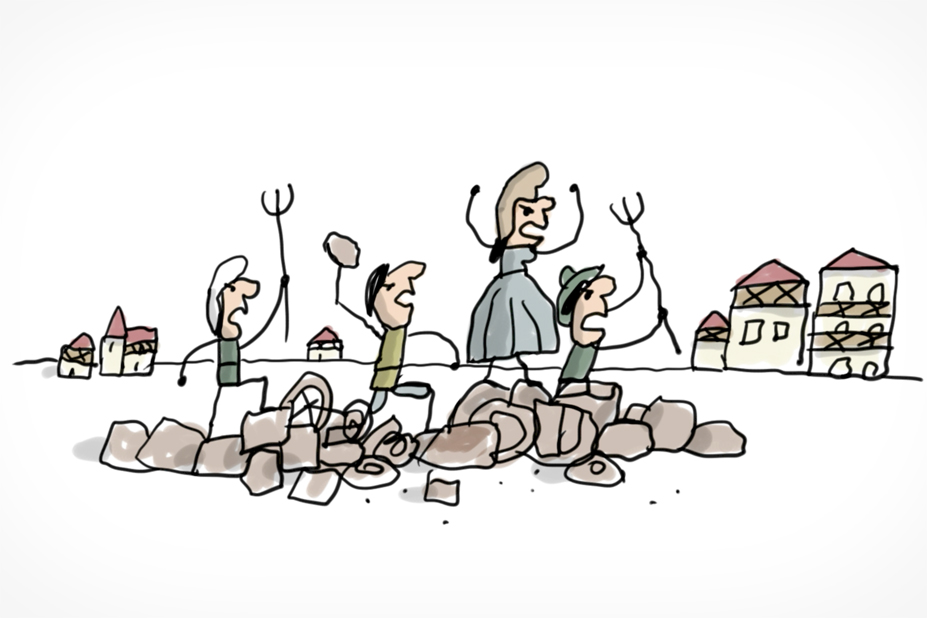In 1789, France was a powerful monarchy and its society was divided into three unequal groups: the nobility, the clergy and the ‘third state’.
The ‘third state’ formed the majority who were often mistreated and paid more and more taxes.
Crises affected the country, prices rose sharply and the poorest didn’t have enough to eat.
In the face of these injustices, demonstrations and riots broke out across France.
On 14th July, an angry crowd attacked the Bastille prison in Paris; the start of a revolution that lasted ten years!
But what were the consequences of the French Revolution?
The deputies drafted the Declaration of the Rights of Man, a text declaring that all citizens were now equal.
The nobility and the clergy must abandon their privileges.
The country was finally united thanks to the creation of 83 departments.
In 1792, the monarchy was abolished and replaced by the republic. The king was imprisoned, then guillotined.
Other reforms were put in place, such as divorce… or elections, but only men could participate.
It was also when one of the symbols of the French Republic, the blue-white-and red flag, appeared.
Today, the Revolution, which marked the history of France, is celebrated every 14th of July.





 Retour
Retour